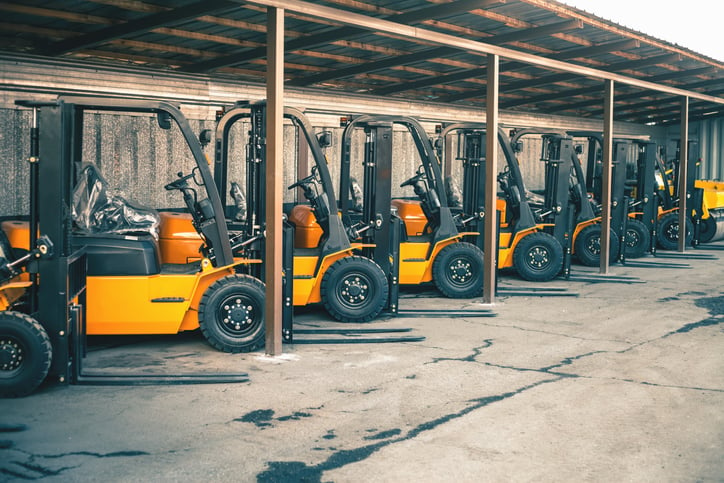Ready to dive into the fascinating world of forklifts? Don’t let the technical jargon leave you scratching your head! This guide is your trusty companion, unraveling the mysteries of common forklift terminology to ensure your forklift adventure is nothing short of seamless. Let’s make navigating the world of forklifts a breeze!
Lift Cylinders
Lift cylinders are the powerhouse behind a forklift’s vertical movement. They control the mast, forks, and carriage elevation, as well as the tilt direction. Powered by hydraulics, these cylinders play a vital role in efficient load handling.
Carriage
The forklift carriage is the front-end platform that supports the load backrest, forks, and attachments. Knowing your forklift’s carriage class is crucial when buying equipment, ensuring compatibility with your specific needs.
Cushion Tires
Cushion tires, designed for indoor use on flat surfaces, offer maneuverability in tight spaces with a smaller turning radius. While they lack the traction of pneumatic tires, they excel in durability and are ideal for indoor applications.
Mast Height
Choosing the right forklift involves considering mast and load backrest height. Understanding these dimensions is essential for safety and productivity. Different mast types, like Triplex and Quad, offer varying lift capabilities for specialized applications.
Overhead Guard
Similar to a car roof protecting passengers, an overhead guard shields the forklift operator from falling loads. An essential safety feature mandated by OSHA and ANSI, it deflects smaller loads and prevents accidents during material handling.
Learn More : What are Forklift Carriages and Forks
Battery Capacity
Battery capacity measures the charge stored in a forklift’s batteries, crucial for determining operational duration. Monitoring battery health and choosing the right capacity ensures uninterrupted workflow and prevents unexpected downtime.
Battery Compartment
The battery compartment, varying in size, houses forklift batteries. Knowing its dimensions is vital for selecting the right forklift, ensuring compatibility with your workspace and application.
Battery Model Identification
Identifying the correct battery for your electric forklift is made easy with a battery model identification code. This code, detailing battery style, cell specifications, and other features, ensures seamless operation and longevity.
Capacity
Understanding a forklift’s capacity, a rating indicating its lifting capability, is paramount for safe material handling. Matching the forklift’s capacity with the load requirements prevents overloading and maintains stability.
Carriage (Again!)
Frequently used, the term “carriage” refers to the forklift’s support structure in front of the mast, where forks are mounted. It plays a crucial role in load stability and proper material handling.
Forklift Classifications
Forklifts are classified by OSHA into seven categories based on various factors. Knowing these classifications helps in choosing the right forklift for specific applications, optimizing efficiency and safety.
Free Lift
Free lift denotes a forklift’s vertical movement capacity before additional mast channels engage. It defines the ability to lift forks without raising the mast, providing flexibility in material handling.
Hook Fork
Some forks fall under the category of “hook forks,” locking into the carriage and hooking over bars. This feature enhances load stability during transport.
This introduction to forklift terminology provides a foundation. Forklifts can be customized, so consult your local forklift dealer for tailored assistance. Happy forklifting!
Learn More : Electric Forklifts vs. Internal Combustion Forklifts



